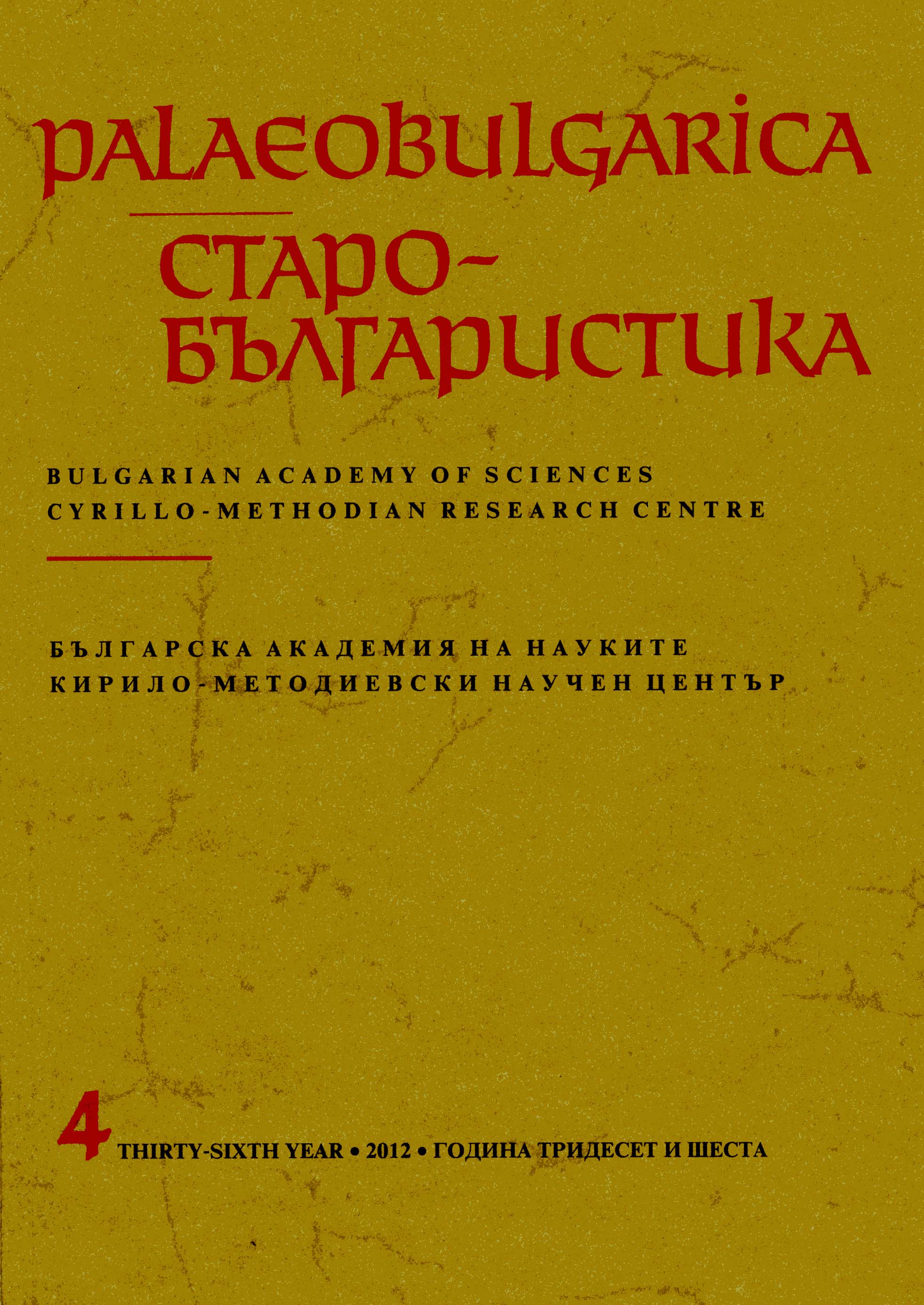Плоская традиция текстов
Flat Tradition of Texts
Author(s): William R. VederSubject(s): Language and Literature Studies
Published by: Кирило-Методиевски научен център при Българска академия на науките
Summary/Abstract: When multiple apographs depend from one and the same antigraph, the tradition of the text is flat: there is no intermediate generation after the first, and all apographs, irrespective of their date, belong to the same, the second generation. This particular type of tradition appears in humanistic copies of classical texts in the 15-16th с In Slavonic, it is shown to have deeply marked the tradition of the Scala Paradisi: of the 17 copies of its translation in the Russian Trinity-St Sergius Monastery made between 1334 and ca. 1620,1 depends from an antigraph it shares with manuscripts outside of the monastery, and 10 and 6 respectively depend from 2 antigraphs kept at the monastery. Evidence of the same type tradition has been found for the Scala Paradisi at Hilandar Monastery on Mt Athos, but its 12 copies need to be investigated comprehensively. In Slavonic, flat tradition is intimately tied to the use of antigraphs written in Glagolitic script. There the three-tier model of textual transmission {reading - parsing through one's language competence - writing) is complicated by a fourth tier: receding from a writing system that did not mark jotation of vowels, palatality of consonants or tenseness ofjers, and simply transliterated Greek words without regarding Slavonic phonotactics. This complication, unknown in the transmission of either classical or vernacular texts, has left visible traces in all copies. Flat tradition of texts effectively combats cumulative corruption of texts. But was it design or other considerations that motivated its application?
Journal: PALAEOBULGARICA / СТАРОБЪЛГАРИСТИКА
- Issue Year: 2012
- Issue No: 4
- Page Range: 98-109
- Page Count: 12
- Language: Russian
- Content File-PDF

